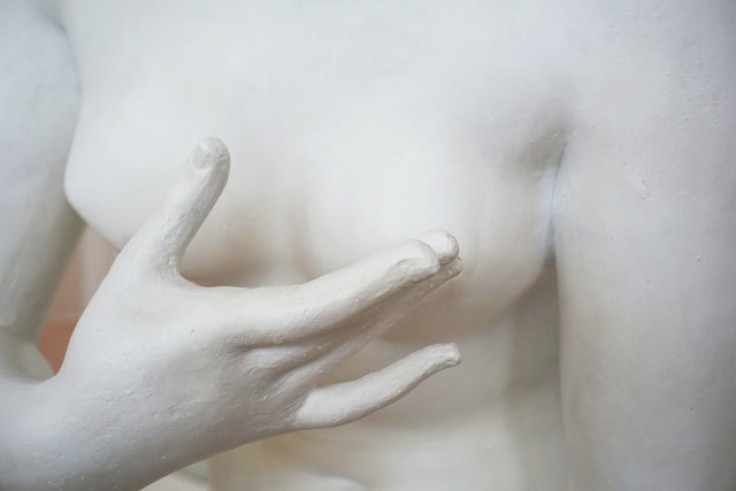
Breast cancer remains one of the most common types of cancer affecting women worldwide. It also affects a smaller percentage of men. While modern medical advancements have made it more treatable than ever, early detection remains the cornerstone of effective management.
By recognizing the early signs and undergoing appropriate screenings, individuals can significantly improve their chances of successful treatment and long-term survival. This article aims to delve into 10 early warning signs of breast cancer that should never be overlooked.
What Is Breast Cancer?
Before diving into its early warning signs, it's important to understand what breast cancer is. Breast cancer is a malignant tumor that originates in the cells of the breast. A malignant tumor is a group of cancer cells that can grow uncontrollably, invade nearby tissues, or spread (metastasize) to other parts of the body. The disease occurs predominantly in women, but men can also develop breast cancer, albeit at a much lower rate.
The breast is made up of lobules (milk-producing glands), ducts (tiny tubes that carry the milk from the lobules to the nipple), and stroma (fatty tissue and ligaments surrounding the ducts and lobules). Breast cancer can begin in any of these areas, but it most commonly starts in the ducts.
There are various types of breast cancer, including Ductal Carcinoma In Situ (DCIS), Invasive Ductal Carcinoma (IDC), and Invasive Lobular Carcinoma (ILC), among others. Each type has its own set of characteristics and treatment options, but the approach to managing them all hinges on early detection and timely intervention.
Understanding what breast cancer is can help demystify the condition, making it less frightening and more manageable. This knowledge also emphasizes the importance of paying attention to the early warning signs described above. The sooner breast cancer is detected, the more likely it is that treatment will be effective, and the better the chances are for a positive outcome.
10 Early Signs of Breast Cancer
Now that you know what breast cancer is and the key signs to look out for, you're better equipped to take proactive measures for your health. Remember, when it comes to breast cancer, early detection is your strongest ally.
1. Lump in the Breast or Underarm
A lump is perhaps the most recognized sign of breast cancer. These lumps can vary in size, texture, and location. While many lumps are benign, any new or changing lump should be evaluated by a medical professional. An ultrasound or mammogram is usually recommended to investigate further.
2. Change in Breast Size or Shape
A noticeable alteration in the size, shape, or contour of the breast is another red flag. Some people may find that one breast appears visibly different in size or hangs lower than its counterpart. This asymmetry may indicate an underlying issue.
3. Skin Dimpling or Puckering
Unusual changes in the skin texture over the breast, such as dimpling or puckering, can be indicative of cancer. The skin may resemble the peel of an orange, which is a symptom not to be ignored.
4. Nipple Changes
The nipple area can also display changes. If your nipple suddenly becomes inverted, retracted, or flattened, consult a healthcare provider. These changes may signify that cancer cells are affecting the tissues behind the nipple.
5. Nipple Discharge
Unexplained nipple discharge, especially if it's tinged with blood, should immediately raise concern. Even if the discharge is clear or of another color, medical evaluation is crucial.
6. Skin Discoloration or Redness
Discoloration or redness of the skin over the breast can be a sign of inflammatory breast cancer. This type of cancer is rare but aggressive, requiring prompt medical attention.
7. Persistent Breast Pain
While occasional breast pain is often benign and may be linked to the menstrual cycle, ongoing, persistent pain is a cause for concern. It could be a sign of an early or advanced tumor.
8. Swelling in the Armpit or Collarbone Area
Swelling or enlargement of lymph nodes in the armpit or near the collarbone can precede a detectable lump in the breast. This is a significant warning sign and needs immediate evaluation.
9. Visible Veins on the Breast
If you notice the veins on the surface of your breast becoming more visible or prominent, this could signify that a cancerous tumor is blocking a blood vessel, increasing blood flow to the affected area.
10. Scaly or Itchy Skin
Although more commonly a sign of skin conditions like eczema, persistent itchiness or scaliness on the nipple or areola could signify Paget's disease of the breast, a rare form of cancer.
If you experience any of these early signs, consult your healthcare provider for a full evaluation, which may include imaging tests and possibly a biopsy. Regular breast self-exams and scheduled mammograms are also invaluable tools for early detection. While not all these symptoms guarantee the presence of cancer, it's better to err on the side of caution. Remember, early detection is your best defense against breast cancer.
Related Article : FDA-Approved Veozah Brings Hope To Breast Cancer Survivors Suffering From Hot Flashes